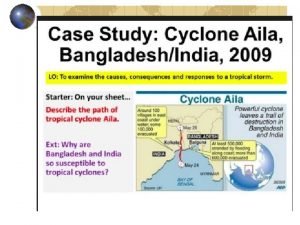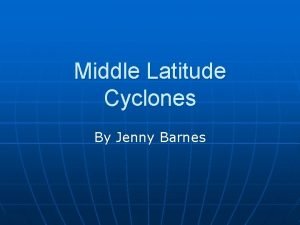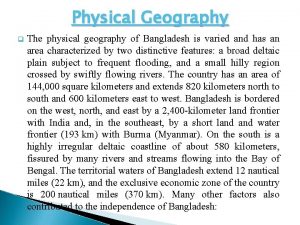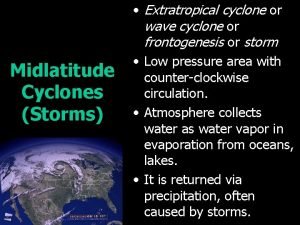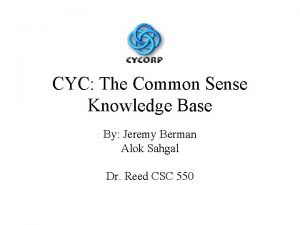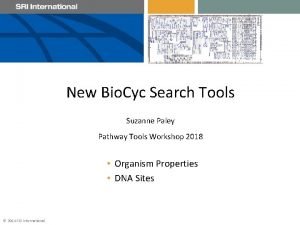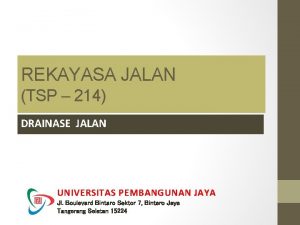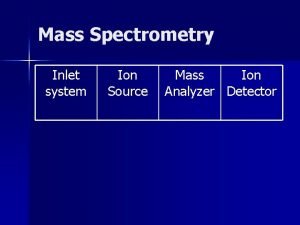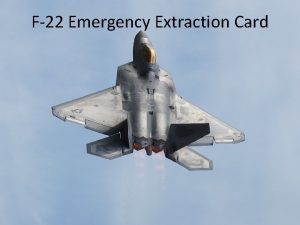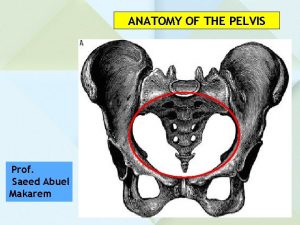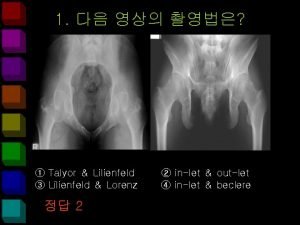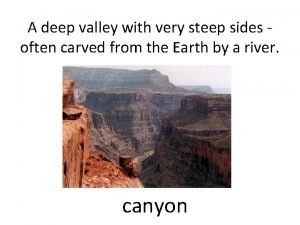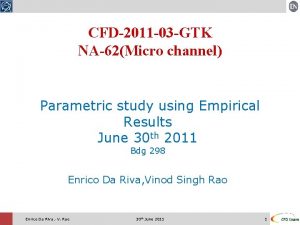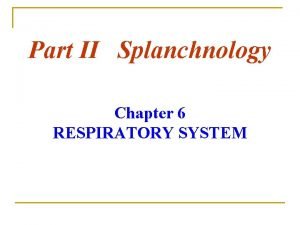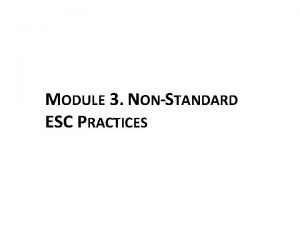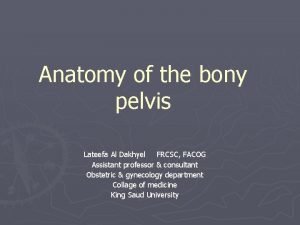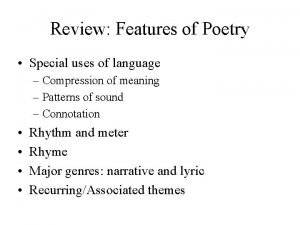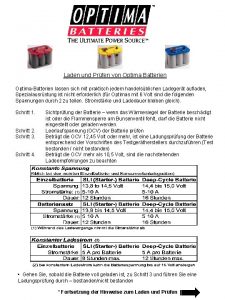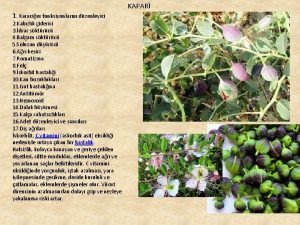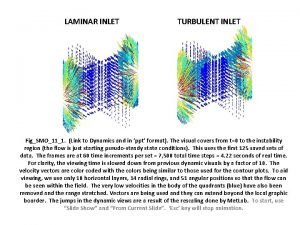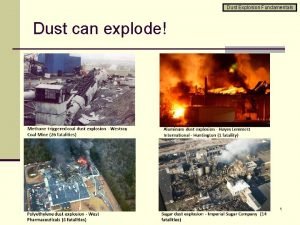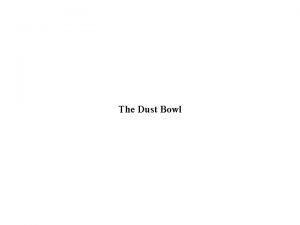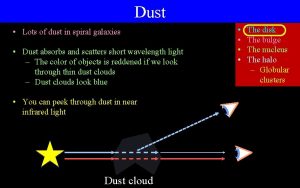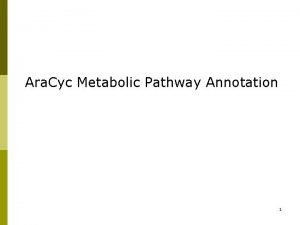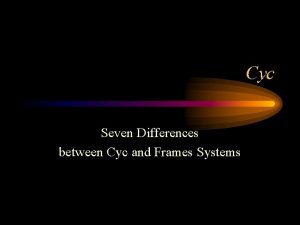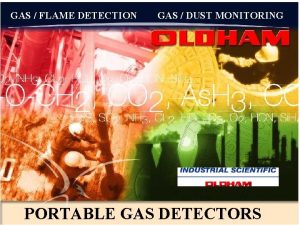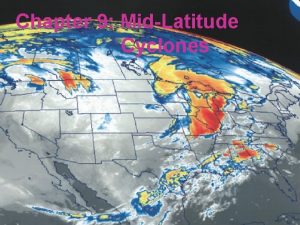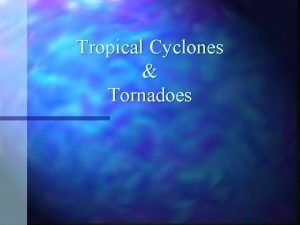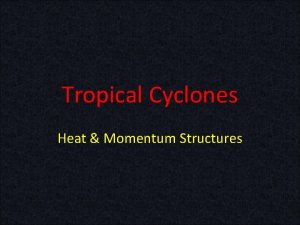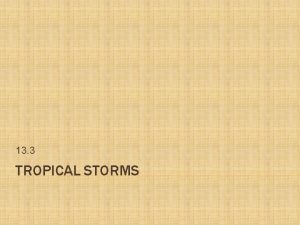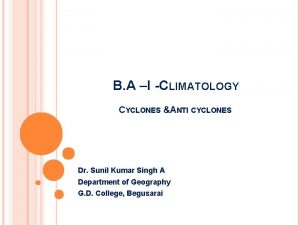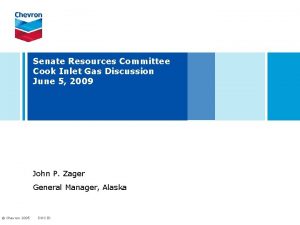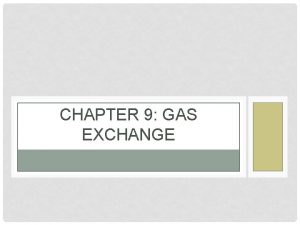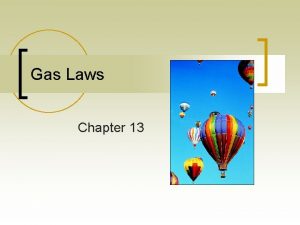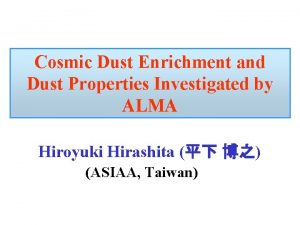Chapter 6 Cyclones Cyc Dust Laden Gas Inlet

















![Collection Efficiency Lapple Technique where [dp]cut = cut diameter (ft) (the particle size collected Collection Efficiency Lapple Technique where [dp]cut = cut diameter (ft) (the particle size collected](https://slidetodoc.com/presentation_image_h/1fce66dba4347c07be401dd1b24274e2/image-18.jpg)


















![And then… Calculate the fractional efficiencies: Problem 6 -1 Efficiency Estimates [dp]i (mm) [dp]i/[dp]cut And then… Calculate the fractional efficiencies: Problem 6 -1 Efficiency Estimates [dp]i (mm) [dp]i/[dp]cut](https://slidetodoc.com/presentation_image_h/1fce66dba4347c07be401dd1b24274e2/image-37.jpg)





- Slides: 42

Chapter 6 • Cyclones Cyc



Dust Laden Gas Inlet Dust Hopper

Factors Affecting Performance • • Particle diameter: H = f(d 2) Gas flow rate: H = f(Q 2) Cyclone diameter Residence time


Size Efficiency Curves

Cyclone Systems • Large diameter cyclones • Small diameter multi-cyclones







Cross Hopper Recirculation

Hopper Design • • • Properly sealing solids discharge valve Adequately sized hopper throat Adequately sloped hopper walls Strike plates or vibrators Thermal insulation

Solids Removal Valves
![Collection Efficiency Lapple Technique where dpcut cut diameter ft the particle size collected Collection Efficiency Lapple Technique where [dp]cut = cut diameter (ft) (the particle size collected](https://slidetodoc.com/presentation_image_h/1fce66dba4347c07be401dd1b24274e2/image-18.jpg)
Collection Efficiency Lapple Technique where [dp]cut = cut diameter (ft) (the particle size collected with 50% efficiency) mg = gas viscosity (lbm/ft·sec) vi = inlet gas velocity (ft/sec) rp = particle density (lbm/ft 3) rg = gas density (lbm/ft 3) Bc = cyclone inlet width (ft) nt = number of turns

where vi = inlet gas velocity (ft/sec) t = residence time (sec) D = cyclone diameter (ft) Vcyclone = total volume of cyclone (ft 3) Voutlet core = volume of outlet core (ft 3) Q = volumetric flow rate (ft 3/sec)

Lapple Efficiency Curve

Example 6 -1 A large diameter cyclone is being used for the removal of grain dust in the range of 8 to 100 mm diameter. What are collection efficiencies over this range if the cyclone has an inlet width of 1 ft, an inlet gas velocity of 50 ft/sec, and an operating temperature of 68°F? Assume nt = 1 and a particle density of 80 lbm/ft 3.

Example 6 -1 continued… Estimate efficiency of 8, 12, 20, 30, 50 and 100 mm diameter particles: Example 6 -1 Efficiency Estimates [dp]i (mm) [dp]i/[dp]cut hi (%) 8 0. 40 9 12 0. 60 28 20 30 50 100 1. 50 2. 50 5. 00 50 65 85 98

Collection Efficiency Leith Technique where hi = efficiency for particle diameter i (dimensionless) C = cyclone dimension factor (dimensionless) Y = cyclone inertial impaction parameter (dimensionless) n = vortex exponent (dimensionless) This The method steps toisachieve the answer to the above equation are covered in your text, pages 12 – 15 of Chapter 6.

Pressure Drop where DP = static pressure drop (in WC) KC = 16, for tangential inlet; 7. 5, for inlet vane (dimensionless) rg = gas density (lbm/ft 3) vi = inlet velocity (ft/sec) a = cyclone inlet height (ft) b = cyclone inlet width (ft) De = outlet pipe diameter (ft)

Pressure Drop where DP = static pressure drop (in WC) KP = 0. 013 to 0. 024 (dimensionless) rg = gas density (lbm/ft 3) vg = inlet velocity (ft/sec)

Example 6 -2 A single high efficiency cyclone has an inlet width of 2 ft, an inlet height of 5 ft and an outlet pipe diameter of 5 ft. Estimate the pressure drop when the inlet velocity is 50 ft/sec and the gas temperature is 68°F. Using Equation 6 -13:

And also… Using Equation 6 -14: ft sec

Instrumentation • Static pressure drop gauges • Inlet and outlet temperature gauges

Advantages and Disadvantages Advantages Low Capital Cost No Moving Parts Few Maintenance Problems Low Operating Cost Relatively Low Pressure Drop Dry Collection and Disposal Relatively Small Space Requirement Disadvantages Relatively Low PM Collection Efficiencies Unable to Handle Sticky Materials High Efficiency Units Experience Higher Pressure Drop

Review Questions 1. What is the normal range of inlet gas stream velocity for large diameter cyclones? (page 3) 5 to 10 feet per second 20 to 50 feet per second 5 to 10 feet per minute 20 to 50 feet per minute 2. What is the purpose of using a solids discharge valve on the hoppers of cyclone collectors? Select all that apply. (page 6) Minimize air infiltration into the cyclone Minimize the risk of fires Maintain solids flow out of the hopper 3. What design feature initiates the spinning gas flow in a large diameter cyclone? (page 4) Turning vanes Gravity Tangential gas inlet None of the above

Review Questions 4. Which type of cyclone collector has higher radial velocities? (page 2) Large diameter cyclones Multi-cyclones 5. What is the purpose of the clean side tube sheet in a multi-cyclone collector? (page 6) Support the cyclone tubes Separate the inlet gas stream from the outlet gas stream Separate the outlet gas stream from the hopper None of the above 6. What is the typical number of complete turns (360 degrees) achieved in a large diameter cyclone operating with a normal inlet gas velocity? (page 3) One-half to three Two to five Five to ten Greater than ten

Review Questions 7. What is the typical range in the diameters of multi-cyclone tubes? (page 6) 1 to 6 inches 6 to 12 inches 12 to 18 inches 18 to 24 inches 8. Must multi-cyclone tubes be oriented vertically (inlet at top, cyclone discharge at bottom) in order to operate properly? (page 6) Yes No 9. Why is it important to fabricate the outlet extension tubes of multicyclone collectors from abrasion resistant material? (page 3) Minimize abrasion caused by the inlet gas stream Minimize abrasion caused by the outlet gas stream Minimize fracturing the inlet particulate matter All of the above

Review Questions 10. The performance of a cyclone collector is related to the __ of the particle diameter. First power Second power Third power Performance is independent of particle size 11. The performance of a cyclone collector is related to the __ of the gas velocity. First power Second power Third power Performance is independent of radial gas velocity 12. Static pressure drop across a cyclone collector is related to the __ of the gas flow rate. First power Second power Third power Static pressure drop is independent of gas flow rate

Review Questions 13. Typical static pressure drops in a multi-cyclone collector are: 1 to 3 in WC 2 to 6 in WC 1 to 3 psig 2 to 6 psig 14. Multi-cyclone collectors are capable of effectively removing particles down to approximately _______ micrometers. 0. 5 micrometers 3 micrometers 10 micrometers 20 micrometers 50 micrometers

Review Problem #1 1. What is the overall collection efficiency for a single cyclone collecting dust with the distribution given below? 2. The collector has a diameter of 1 ft, an inlet gas velocity of 50 ft/sec, and an operating temperature of 200°F? 3. The particle density is 70 lbm/ft 3. Assume the gas stream spins two complete rotations within the cyclone. (page 10) Size (mm) 10 20 30 40 50 60 70 80 100 % of Mass 1 3 9 13 24 29 15 4 2 100%

Review solution Solution Estimate the gas viscosity at 200°F: Calculate the cut diameter:
![And then Calculate the fractional efficiencies Problem 6 1 Efficiency Estimates dpi mm dpidpcut And then… Calculate the fractional efficiencies: Problem 6 -1 Efficiency Estimates [dp]i (mm) [dp]i/[dp]cut](https://slidetodoc.com/presentation_image_h/1fce66dba4347c07be401dd1b24274e2/image-37.jpg)
And then… Calculate the fractional efficiencies: Problem 6 -1 Efficiency Estimates [dp]i (mm) [dp]i/[dp]cut ηi (%) 10 0. 6 28 20 1. 2 55 30 40 50 60 70 80 100 1. 8 2. 4 3. 0 3. 6 4. 2 4. 8 6. 1 74 83 90 94 97 98 100

And finally… Calculate the overall efficiency: Size (gm) % of Mass ηi (%) Mass collected (%) 10 1 28 0. 28 20 3 55 1. 65 30 9 74 6. 66 40 50 60 70 80 100 13 24 29 15 4 2 100% 83 90 94 97 98 100 10. 79 21. 60 27. 26 14. 55 3. 92 2. 00 88. 71%

Review problem #2 2. A single cyclone collector has the following fractional efficiency curve. Estimate the overall collection efficiency of a dust with a d 50 of 50 mm and a sg of 1. 67. (page 10) Solution…

Plot cumulative distribution plot… Divide into particle size ranges and determine the percent mass in each size range: Size (gm) % of Mass Less Than Size Range (mm) % of Mass 10 15 26 40 67 100 0. 1 1. 0 10. 0 32. 0 70. 0 90. 0 0 to 10 10 to 15 15 to 26 26 to 40 40 to 67 67 to 100 >100 0. 1 0. 9 9. 0 22. 0 38. 0 20. 0 10. 0 And then…

Calculate the overall efficiency: Size Range (gm) Avg Size (gm) % of Mass hi (%) Mass Collected (%) 0 to 10 10 to 15 5. 0 12. 5 0. 1 0. 9 28 52 0. 03 0. 47 15 to 26 26 to 40 40 to 67 67 to 100 >100 20. 5 33. 0 53. 5 83. 5 100. 0 9. 0 22. 0 38. 0 20. 0 100% 68 82 93 99 99 6. 12 18. 04 35. 34 19. 80 9. 90 89. 70%

And plot…
 Describe the distribution of tropical storms
Describe the distribution of tropical storms What are middle-latitude cyclones?
What are middle-latitude cyclones? Geography of bangladesh
Geography of bangladesh Wave cyclone
Wave cyclone What are middle-latitude cyclones?
What are middle-latitude cyclones? The cyc
The cyc Eco cyc
Eco cyc Eco cyc
Eco cyc Opencyc
Opencyc Bio cyc
Bio cyc Cyc knowledge base
Cyc knowledge base Cyc software
Cyc software Sztuczny cyc
Sztuczny cyc Cyc
Cyc Bio cyc
Bio cyc Bio cyc
Bio cyc Physical features in the middle east
Physical features in the middle east Drainase
Drainase Plane of pelvic inlet
Plane of pelvic inlet Inlet system in mass spectrometry
Inlet system in mass spectrometry Inlet zone
Inlet zone Sternocostalis
Sternocostalis F-22 inlet
F-22 inlet Solitary nodule thyroid
Solitary nodule thyroid Pubic inlet and outlet
Pubic inlet and outlet Inlet of indian ocean between africa and asia
Inlet of indian ocean between africa and asia Inlet outlet view
Inlet outlet view Laryngeal inlet
Laryngeal inlet Specific resistance formula
Specific resistance formula Diagonal conjugate
Diagonal conjugate Smallest anteroposterior diameter of the pelvic inlet
Smallest anteroposterior diameter of the pelvic inlet Has very steep sides
Has very steep sides Kopp's rule formula
Kopp's rule formula Perflourohexane
Perflourohexane Inlet
Inlet Limen nasi
Limen nasi Gutter gator inlet protection
Gutter gator inlet protection Indian river inlet dangerous
Indian river inlet dangerous Pelvic inlet boundaries
Pelvic inlet boundaries Punctate sialectasis meaning
Punctate sialectasis meaning With rue my heart is laden analysis
With rue my heart is laden analysis Prfen
Prfen Tüylü laden faydaları
Tüylü laden faydaları
